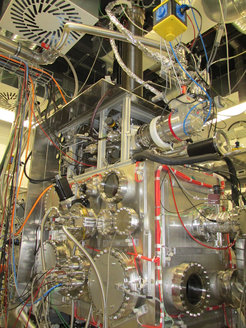Atom-Surface Scattering Dynamics

Atom beams scattering from surfaces is, in principle, the simplest phenomenon one can study in the field of Dynamics at Surfaces. Of all the atoms of the periodic table, of course the hydrogen atom is the simplest. It is for this reason that H-atom surface scattering - the simplest of the simplest - is particularly attractive to make detailed comparisons between high level experiments and first principles theories. This simplicity reveals itself in the fact that - as long as the atom does not change its electronic state - the collision with the surface only exchanges atomic translational energy with phononic and electronic degrees of freedom of the surface.
We have designed a ground breaking new experimental apparatus where H-atoms are produced by photo dissociation (HI + hν → H + I) of a diatomic molecule pre-cooled in a molecular beam expansion. This allows us to control the translational energy of H-atoms between, Ei= 0.5 and 7 eV, and to produce H-atoms with extremely narrow initial translational energy distributions, ΔEi < 0.002 eV. This is combined with the well know Rydberg atom tagging (RAT) method, which can read the final translational energy of the H-atom after collision with the surface with a similar energy precision and accuracy. This instrument is equipped with a 6-axis sample manipulator that is designed to control the temperature of the target crystal from 50K to 1300K. The detector used in the Rydberg atom tagging is rotatable around two rotation axes, allowing us to readily investigate in-plane and out-of-plane scattering.
More information about the experiment and ongoing projects can be found here on our website of the University of Göttingen.


